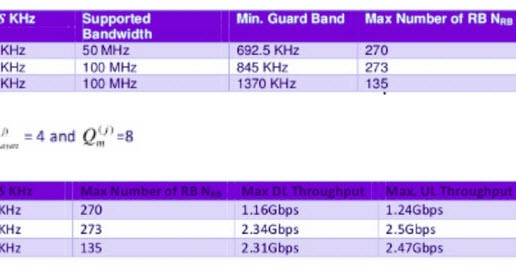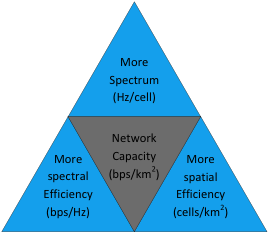

Under ideal circumstances, 5G networks should offer users a maximum latency of just 4ms, down from about 20ms on LTE cells. To enable this, the control plane latency should ideally be as low as 10ms-as in, a 5G radio should switch from full-speed to battery-efficient states within 10ms.

The 5G spec calls for radio interfaces that are energy efficient when under load, but also drop into a low energy mode quickly when not in use. The spec talks a bit about how different physical locations will need different cell setups: indoor and dense urban areas don't need to worry about high-speed vehicular access, but rural areas need to support pedestrians, vehicular, and high-speed vehicular users. Similar to LTE and LTE-Advanced, the 5G spec calls for base stations that can support everything from 0km/h all the way up to "500km/h high speed vehicular" access (i.e. When every traffic light, parking space, and vehicle is 5G-enabled, you'll start to hit that kind of connection density. This might sound like a lot (and it is), but it sounds like this is mostly for the Internet of Things, rather than super-dense cities. 5G must support at least 1 million connected devices per square kilometre (0.38 square miles). In reality, those 20 gigabits will be split between all of the users on the cell. In theory, fixed wireless broadband users might get speeds close to this with 5G, if they have a dedicated point-to-point connection. This is the total amount of traffic that can be handled by a single cell. The specification calls for at least 20Gbps downlink and 10Gbps uplink per mobile base station. I'll pick out a few of the more interesting tidbits from the draft spec, but if you want to read the document yourself, don't be scared: it's surprisingly human-readable. The document is technically just a draft at this point, but that's underselling its significance: it will likely be approved and finalised in November this year, at which point work begins in earnest on building 5G tech. These requirements come from the ITU's draft report on the technical requirements for IMT-2020 (aka 5G) radio interfaces, which was published Thursday. The incoming 5G standard must also support up to 1 million connected devices per square kilometre, and the standard will require carriers to have at least 100MHz of free spectrum, scaling up to 1GHz where feasible. In contrast, the peak data rate for current LTE cells is about 1Gbps. The total download capacity for a single 5G mobile cell must be at least 20Gbps, the International Telecommunication Union (ITU) has decided.


 0 kommentar(er)
0 kommentar(er)
